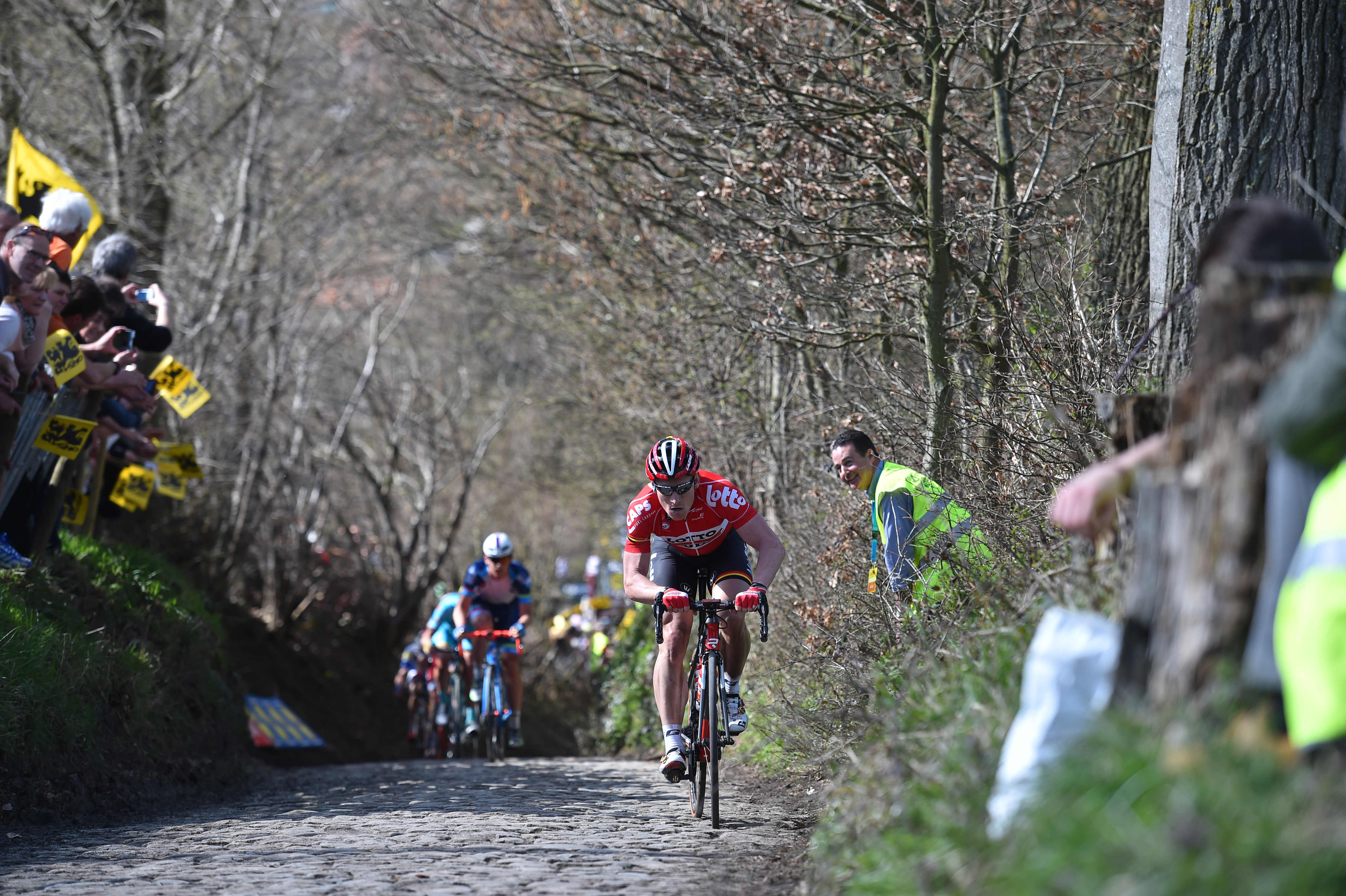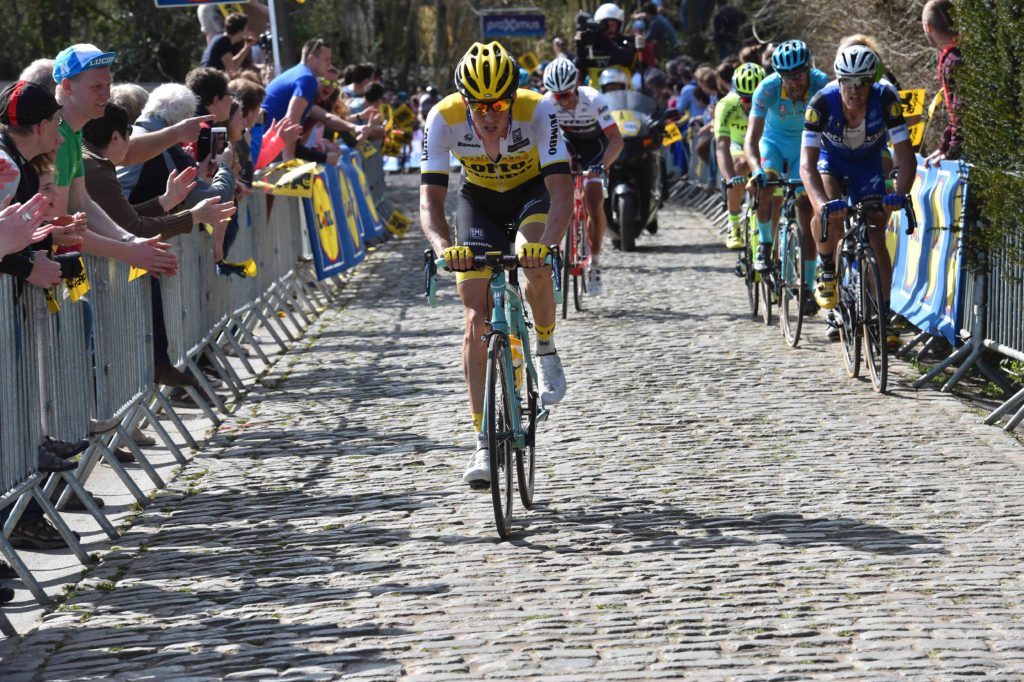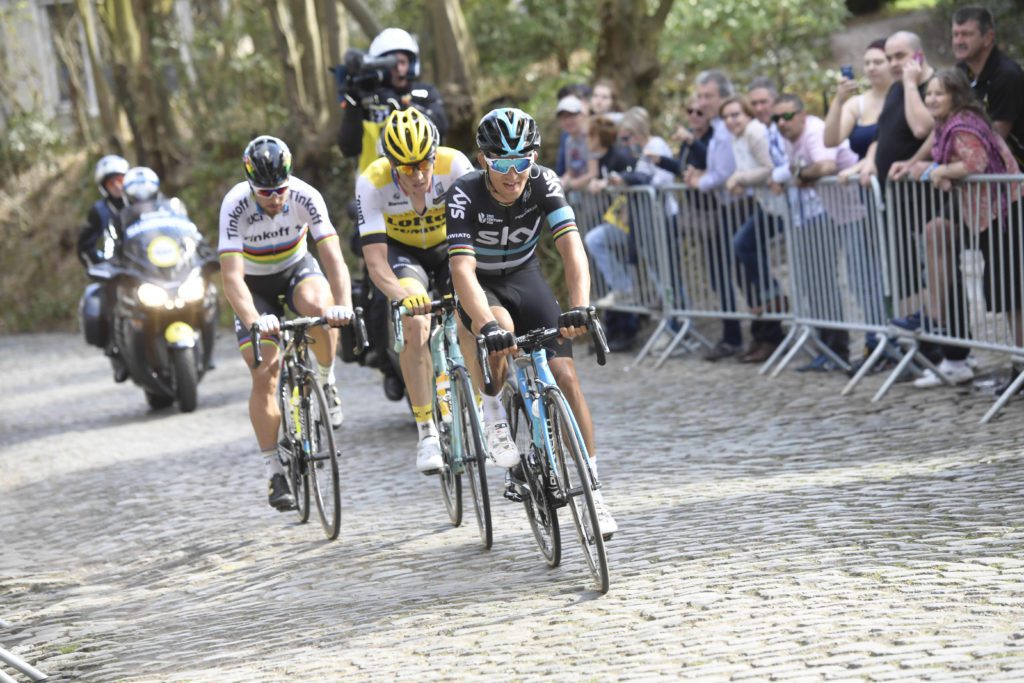The defining climbs and cobbles of the Flanders Classics season
The sections of bumpy road that give the spring season their character


As you prep your waffle iron and refine your beer selection in preparation for spectating a spring classic, it’s worth a quick refresher on what all the excitement is about. The spring classics are notorious for their race defining cobbled sections and climbs that shred the peloton to bits.
How is one to keep track of the endless list of historic and sometimes pivotal sections of road that give the spring races their character? Avid cycling fans can list them off one by one but for many the names can become a confusing jumble. So here is a refresher of some of the most famous sections of the bumpy stuff.
RELATED: Win a cycling getaway to North Carolina’s cycling mecca, the Land of Waterfalls
Muur Van Geraardsbergen
After a five-year absence from the Tour of Flanders, one of the region’s most iconic climbs returned to De Ronde in 2017 and will once again make an appearance in 2019. With its 20 per cent gradients leading up to the iconic chapel, it’s a section of road that fans dearly missed. The Muur features in the 102st edition of Flanders in 2019 and in Omloop Het Newsblad.
RELATED: A WorldTour record six Canadians slated for Omloop Het Nieuwsblad
Koppenberg
One of the toughest climbs in Flanders with maximum gradients of 22 per cent over its 640 m lenth, the Koppenberg is rough and tough, to say the least. It’s also become notorious since it’s introduction in De Ronde in 1976. Since, some of the sports most memorable images come from its slopes. Even the pros are often seen walking their bikes up it if they lose traction or are held up by the riders ahead slowing down as they hit the climbs steepest pitches just 200 m in.
Taaienberg

The Taaienberg is a fierce 650 m long power climb with max gradients of 18 per cent. It’s not the region’s toughest climb but it appears in some of the biggest races. Look for it in Dwars Door Vlaanderen , De Ronde and E3-BinckBank. It was one of Tom Boonen’s favourite places to attack.
Kemmelberg
At 1400 m long, the Kemmelberg is the centrepiece of Gent-Wevelgen where it’s hit twice, the final time with only 34-km to go. The thick stones are neatly laid out but it still features gradients of 22 per cent.
Paterberg
At 700 m and with gradients of 20 per cent, the Paterberg starts with a right-hand turn that slows the riders down. In 2019, it appears twice during the Tour of Flanders with it being the final ascent of the race only being 13-km before the finish. It’s been the race’s final obstacle since 2012. In 2016, Peter Sagan used the cobbled climb to launch his race-winning solo move riding clear of Sep Vanmarke. It also has appeared in E3 Harelbeke.
Oude Kwaremont
The climb that immediately proceeds the Patergerg in De Rode is the longer Oude Kwaremont. At 2,200 m with maximum gradients of 11 per cent, it is long and a final kick towards the top often creates a selection. It’s ridden three times in 2018 at Flanders. It also appears in E3-BinckBank.
RELATED: Spurcycle bell review
Kruisberg
One of the last climbs in the Tour of Flanders is the 1,000 m long Kruisberg which features gradients of 9.8 per cent. It’s a climb that gradually gets steeper.


